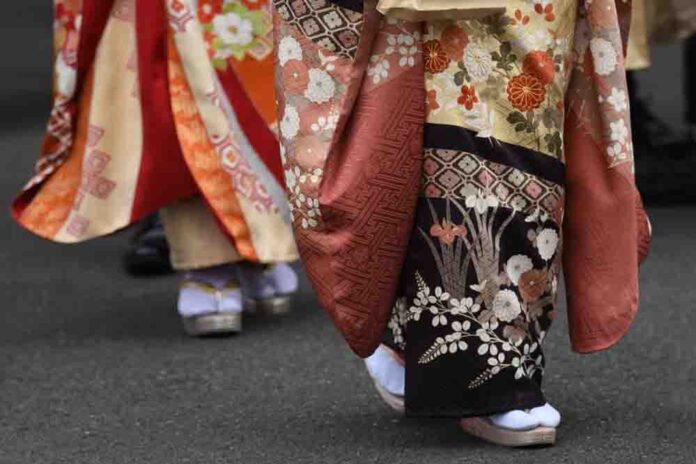Japan’s traditional industries are struggling with dropping consumer demand and aging craftsmen, but Hosoo is a family company that’s thriving after 12 generations.
Hosoo in 2010, Hosoo developed a loom capable of weaving Nishijin textiles with a width of 150cm enabling it to provide innovative textiles for international markets in areas such as interiors, fashion, art, science, and technology.
Nishijin textiles were developed with the support of imperial nobles, the samurai class, and the upper class about 1,200 years ago, in the ancient capital of Kyoto. The origins of such textiles and weaving technologies were adopted from mainland China around the 5th and 6th centuries.
Nishijin textiles are known for using pre-dyed yarns and special types of yarns called “haku”, in which gold and silver leaf foil have been cut into thin strips and directly woven into the fabric. Nishijin textiles are arguably one of the most complex structures in the world to produce require over 20 steps to make Nishijin textiles with a master craftsman in charge at each step.
Hosoo emphasizes the value of collaboration between not just craftsmen, but also specialists from other fields and backgrounds. A loom that would accommodate a width of 150cm, which is accepted worldwide as the industry standard was developed to accommodate the requirements of a Western buyer changed the company’s mindset of the kimono, which was no longer limited to traditional attire worn in Japan, but a textile that could be appreciated in other realms. One example of this were the innovative techniques that were born from the collaboration with Teresita Fernández resulting in the artwork, “Nishijin Sky”.
Mihara Yasuhiro retains a strong commitment to Japanese arts and crafts, which in the 2012 season was represented in the subtle, barely visible embroidery and the cloud-like traditional Japanese iconography used in this camouflage print woven from kimono silk by Hosoo
Domestic kimono market has rapidly declined over the past 30 odd years, but company continue to drive its pursuit of beauty. A spokesman of the company said the Hosoo family has controlled the company for 12 generations represents a philosophy of activities to support people’s lives through the ages by means of craftsmanship. The architecture pays homage to the tradition of Nishijin-ori, which is to create new value by joining together a variety of expert craftsmen in unprecedented ways.



